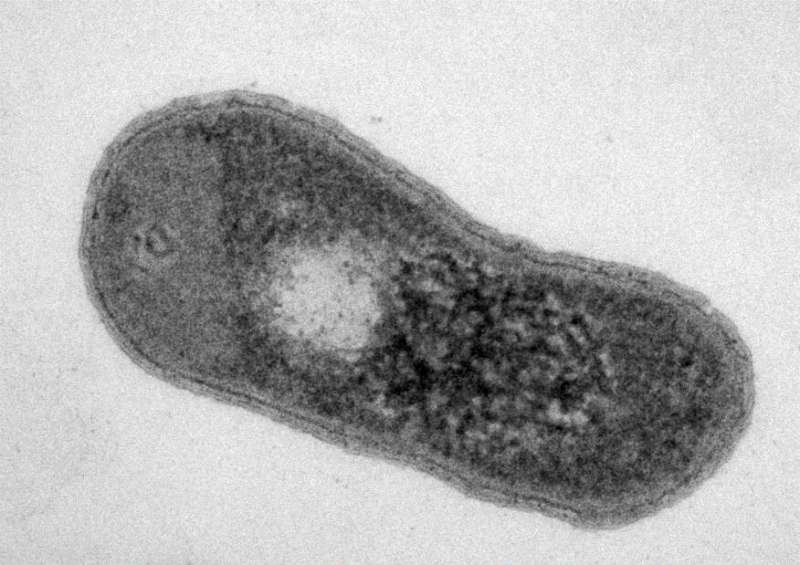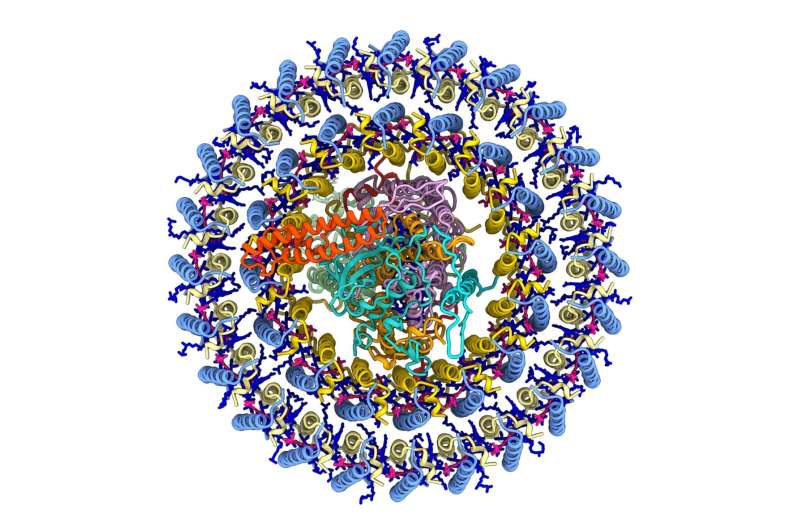Scientists show how an enigmatic bacterium from the Gobi desert harvests solar energy

Eight years ago an unusual bacterium was discovered in Lake Tian E Hu (Swan lake) in the Gobi desert. The new organism belongs to a rare bacterial genus called Gemmatimonas, and it contained bacteriochlorophyll, a pigment related to chlorophylls found in plants. Analysis of its genome by a collaboration of European and British scientists suggested that this novel bacterium conducts an ancient form of photosynthesis.
Lead Author, Dr. Pu Qian, says, “this structural and functional study has exciting implications because it shows that G. phototrophica has independently evolved its own compact, robust, and highly effective architecture for harvesting and trapping solar energy.”
In their paper, published on 16 February in Science Advances, the team show how this enigmatic organism harvests light energy. They explain how they used electron cryomicroscopy collected in four different labs. Initially, at Basel University, with which they got a projection map of the complex. Data was then collected at eBIC (Electron Bio-Imaging Centre), at Diamond Light Source in the UK, from which a 3.4-Å resolution structure was obtained. Further data collection was done at the CEITECH in the Czech Republic. Combining the two datasets produced a 3.2-Å model and a final data collection performed at Thermo Fisher Scientific resulted in the 2.4-Å resolution structure.

Their work revealed the detailed structure of the photosynthesis complex, which comprises 178 pigments bound to more than 80 protein subunits . The light harvesting subunits are arranged in two concentric rings around the reaction center which converts the absorbed light energy into an electrical charge. “The architecture of the complex is very elegant. A real masterpiece of nature,” says Dr. Michal Koblizek from the Inst. of Microbiology, Czech Rep. “It has not only good structural stability, but also great light harvesting efficiency.”
Since the pigments in the outer ring have higher energy than the pigments in the center of the ring the whole arrangement serves as a funnel. The energy absorbed by the pigments at the periphery of the complex is transferred within several picoseconds down the energy gradient to the center of the complex where it is transformed into metabolic energy.
Unique pigments in photosynthetic marine bacterium reveal how it lives in low light
Pu Qian et al, 2.4-Å structure of the double-ring Gemmatimonas phototrophica photosystem, Science Advances (2022). DOI: 10.1126/sciadv.abk3139
Citation:
Scientists show how an enigmatic bacterium from the Gobi desert harvests solar energy (2022, February 17)
retrieved 17 February 2022
from https://phys.org/news/2022-02-scientists-enigmatic-bacterium-gobi-harvests.html
This document is subject to copyright. Apart from any fair dealing for the purpose of private study or research, no
part may be reproduced without the written permission. The content is provided for information purposes only.
For all the latest Science News Click Here
For the latest news and updates, follow us on Google News.

